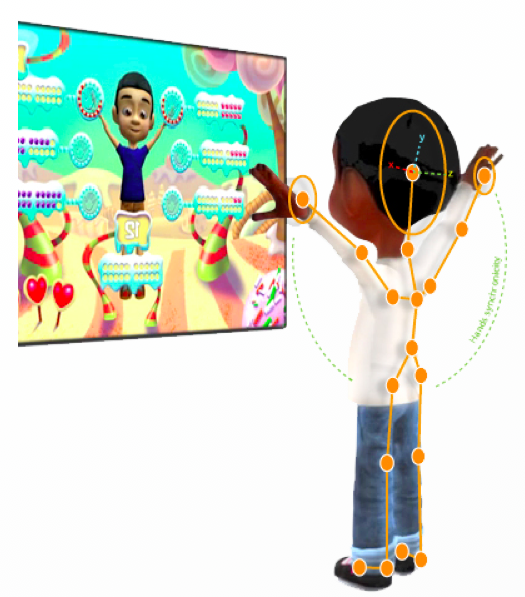Embodied learning goes beyond kinesthetic learning: A modern pedagogical and intervention model

School teachers should not regard the mind and the body as two distinct things, with teaching sessions designed to train only the mind. Recent developments in cognitive science and pedagogy, focus on the added value of the “embodied learning” model which dictate that “the body and brain work together in an inextricably linked brain-body system” [1]. Embodied learning goes beyond kinesthetic learning, i.e. to promote learning through kinesthetic engagement and the carrying out of physical activities [2]. Embodied learning key principle is that the human body can play a significant role in the cognitive process, in thinking, in understanding concepts and in acting in the world [3]. By placing physical interactive activities in the learning process, the bodily movements and senses can influence cognition.

Researchers generally agree that the physical movement plays substantial role in fostering conceptual learning. For example, Fernandes et al. (2016) made a meta-analysis of several research studies which show that bilateral body coordination showed strong relationship with fluid intelligence and academic performance [4]. Also, several studies have indicated that the embodied learning process lead not only to a better academic performance but also to better learning attitude and improvement of cognitive control, or executive control, which is involved in the selection, scheduling, and coordination of computational processes underlying perception, memory, and goal-directed action [5].
Taking for granted the added learning value of embodied learning, Abrahamson & Bakker (2016) mention the following dilemma “While some researchers believe that we should train students directly to perform the movements, others believe that we should let students discover these movements for themselves through working on goal-oriented tasks in appropriately constrained environments” [6]. In fact, this is not a dilemma but a roadmap for applying embodied learning to achieve more effectively and efficiently the desired learning progression.
On the one hand, the body should be ready in order that a student earns best during an engaging learning task. This is why physical education programs and other opportunities for physical activity in the school environment have been proposed since they are important for optimal health and development in school-age children. On the other hand, for children with learning disabilities such as autism, dyspraxia, ADHD, interventions do not only focus on academic topics but occupational therapists (OTs) and physical therapists (PTs) help students improve their gross and fine motor skills as well as executive function. Their role is to empower children to reach their full potential with regards to what Gallagher calls the “body schema, i.e. a system of sensory-motor capacities, encompassing all of the nonconscious aspects of motor control—including subcortical, premotor, and motor processes in the brain, as well as the information systems required for these processes to function properly” [7].
We argue that teachers, OTs & PTs should openly embrace embodied learning as an everyday pedagogical & intervention model. This is why we have developed the Kinems breakthrough movement-based interactive learning gaming platform, i.e. to offer stimulating learning experiences to students who get engaged into physically active tasks in Math and ELA.
Visit and subscribe to our Kinems youtube channel and Facebook page to stay up-to-date on our latest games and platform features!
References
[1] McClelland, E., Pitt, A. and Stein, J. (2015) Enhanced academic performance using a novel classroom physical activity intervention to increase awareness, attention and self-control: Putting embodied cognition into action. Improving Schools 2015, Vol 18(1) 83-100)
[2] Montessori, M. The Montessori Method. New York: Schoken Books, 1964.
[3] Wilson, R.A. and Foglia, L. (2017). Embodied Cognition, The Stanford Encyclopedia of Philosophy (Spring 2017 Edition), Edward N. Zalta (ed.), URL: https://plato.stanford.edu/archives/spr2017/entries/embodied-cognition/.
[4] Fernandes VR, Ribeiro MLS, Melo T, de Tarso Maciel-Pinheiro P, Guimarães TT, Araújo NB, Ribeiro S and Deslandes AC (2016) Motor Coordination Correlates with Academic Achievement and Cognitive Function in Children. Frontiers in Psychology, 7:318
[5] Mullen, S. P., & Hall, P. A. (2015). Editorial: Physical activity, self-regulation, and executive control across the lifespan. Frontiers in Human Neuroscience, 9, 614. http://doi.org/10.3389/fnhum.2015.00614
[6] Abrahamson, D., & Bakker, A. (2016). Making sense of movement in embodied design for mathematics learning. Cognitive Research, 1(1), 33. http://doi.org/10.1186/s41235-016-0034-3.
[7] Gallagher, S. (2005). How the Body Shapes the Mind, Oxford, England: Oxford University Press, 2005..